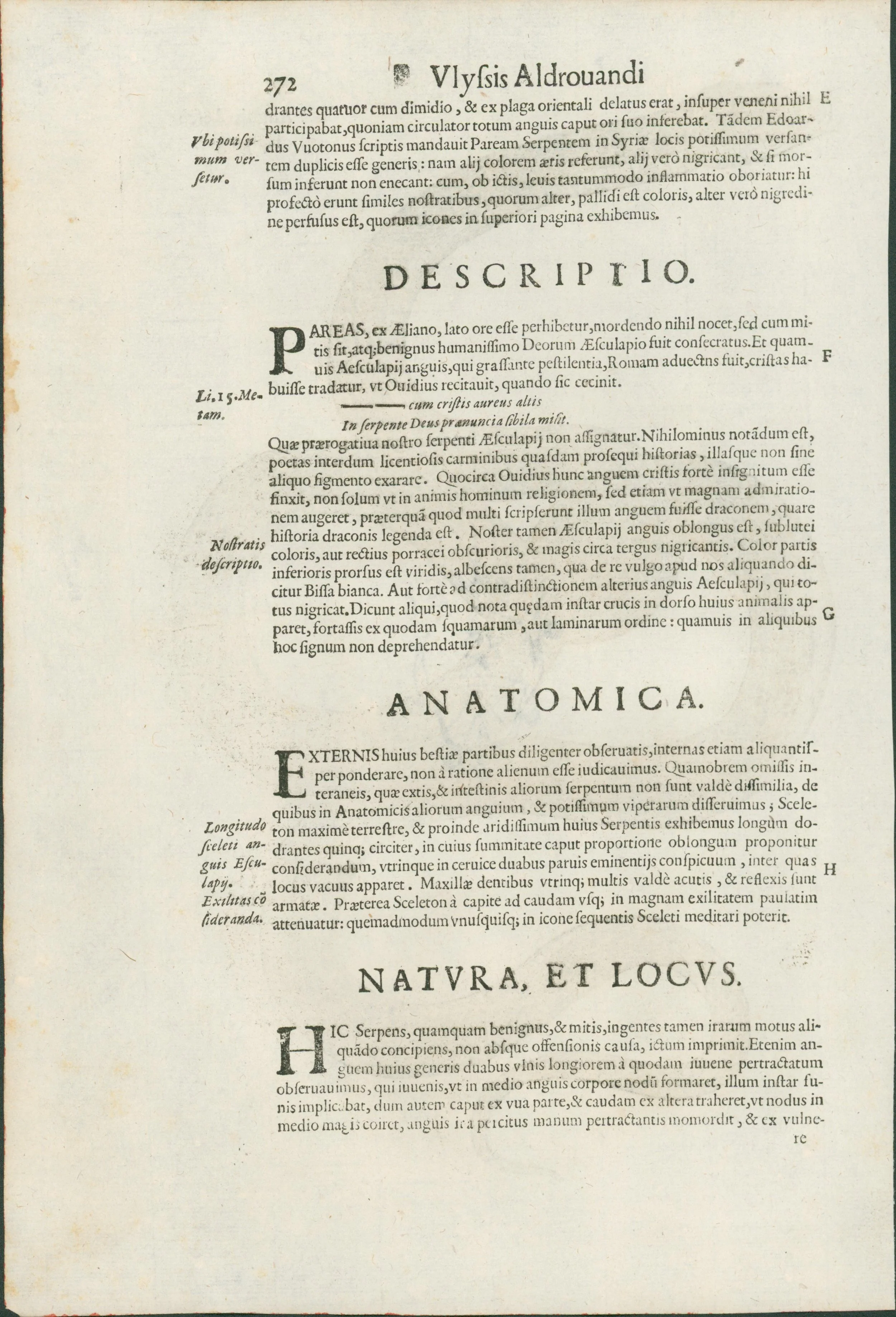









Coiled Serpents – 17th-Century Natural History Engravings by Aldrovandi (1640)
A rare suite of five original 1640 woodcut engravings from Ulysse Aldrovandi’s Serpentum et Draconum Historiae, these bold serpent illustrations are masterworks of early scientific observation and Renaissance imagination.
Source Work: Serpentum et Draconum Historiae Libri Duo (Bologna: 1640)
Illustrators: Attributed to Jacopo Ligozzi (1547–1627), woodcut designs
1. Rarity & Authenticity
These serpent engravings come from one of the rarest and most artistically arresting volumes of Aldrovandi’s Opera Omnia. The Serpentum volume (1640) was published posthumously and contains both real and imagined reptilian forms, revealing a fascinating blend of empirical observation and Renaissance mythological tradition.
2. Artistic Merit
These snake renderings are visually powerful — tightly coiled or elongated, elegantly scaled, and evocative of both naturalistic study and graphic abstraction. Their minimalist elegance makes them highly desirable for contemporary collectors and interior designers alike. The condition of the leaves is excellent and will go well in any private home or in a quality tattoo store.
3. Historical Significance
As part of the first comprehensive attempt to visually catalogue the natural world, these plates represent a pivotal moment in scientific thought, bridging the mystical and empirical. Aldrovandi’s influence on later taxonomists like Linnaeus is well-documented.
We love these snakes. These are survivors from the dawn of taxonomy. Each twist of their bodies, each scale meticulously carved into woodblock, speaks to a 17th-century vision of nature that was simultaneously mystical and observational. From Aldrovandi’s Bologna workshop to your gallery or tattoo store wall, these are amazing!
A rare suite of five original 1640 woodcut engravings from Ulysse Aldrovandi’s Serpentum et Draconum Historiae, these bold serpent illustrations are masterworks of early scientific observation and Renaissance imagination.
Source Work: Serpentum et Draconum Historiae Libri Duo (Bologna: 1640)
Illustrators: Attributed to Jacopo Ligozzi (1547–1627), woodcut designs
1. Rarity & Authenticity
These serpent engravings come from one of the rarest and most artistically arresting volumes of Aldrovandi’s Opera Omnia. The Serpentum volume (1640) was published posthumously and contains both real and imagined reptilian forms, revealing a fascinating blend of empirical observation and Renaissance mythological tradition.
2. Artistic Merit
These snake renderings are visually powerful — tightly coiled or elongated, elegantly scaled, and evocative of both naturalistic study and graphic abstraction. Their minimalist elegance makes them highly desirable for contemporary collectors and interior designers alike. The condition of the leaves is excellent and will go well in any private home or in a quality tattoo store.
3. Historical Significance
As part of the first comprehensive attempt to visually catalogue the natural world, these plates represent a pivotal moment in scientific thought, bridging the mystical and empirical. Aldrovandi’s influence on later taxonomists like Linnaeus is well-documented.
We love these snakes. These are survivors from the dawn of taxonomy. Each twist of their bodies, each scale meticulously carved into woodblock, speaks to a 17th-century vision of nature that was simultaneously mystical and observational. From Aldrovandi’s Bologna workshop to your gallery or tattoo store wall, these are amazing!